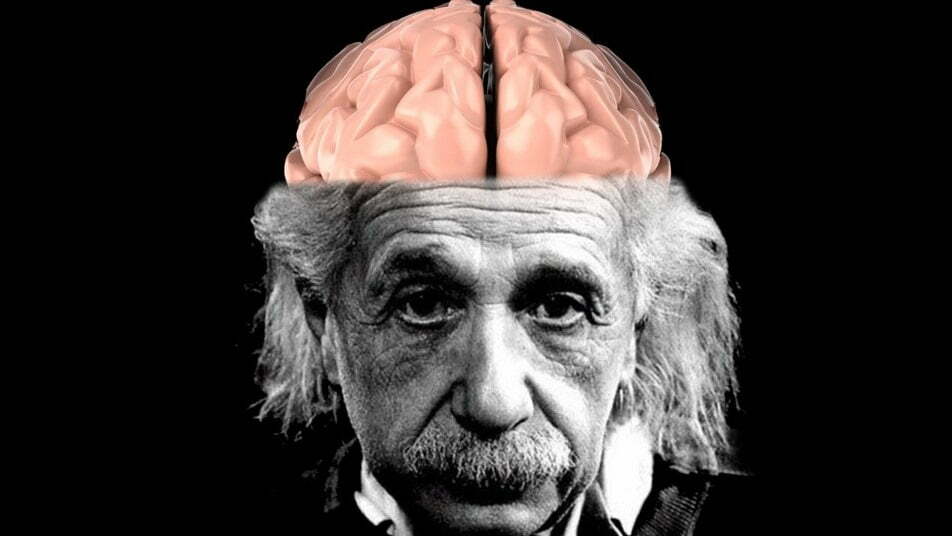Who are the four famous people whose brains were examined after their deaths?
Einstein, Descartes, Gauss, and Lenin: How do the minds that influence the world work? Is there a significant difference between our minds and their minds? Neuroscientists try to satisfy some of their curiosity by studying the brains of great thinkers. They try to understand the differences between the brains of these people and the normal brain.

Albert Einstein's Brain
After Einstein died in 1955, an autopsy was performed by pathologist Thomas Harvey. After the autopsy, Einstein's brain was removed. Afterwards, it was photographed from different angles. For examination by different experts, Einstein's brain was divided into 240 separate parts, and separate tissue samples were taken from each part.
Many scientists have tried to find an explanation for Einstein's genius by looking at these tissue samples. Einstein's brain weighed 1230 grams, lighter than the average human brain. His frontal cortex was slightly larger than average.
This might have furthered his ability to establish cause-effect relationships between the events around him. Additionally, the inferior parietal lobe (the part of the brain that has functions such as detecting the location and direction of the perceived object and housing our reading, writing, and arithmetic abilities) was larger than average.
In other words, contrary to popular belief, Einstein had a smaller-than-average brain. However, what made him different was that some of the brain regions that supported his analytical intelligence had a larger ratio to the overall brain volume. As we said at the beginning, it is not correct to associate the size of the brain with intelligence alone. What is important is the distribution of the brain's regions, their relative proportions (partial proportions), and their interactions with each other.
The Brain of Rene Descartes
Descartes is a French philosopher who famously said "I think, therefore I am." His philosophical views are considered the enlightenment of the modern age. Mathematicians know themselves mostly by giving us the Cartesian System.
Today, many people know the story of Einstein's brain, which we discussed at the beginning. In fact, a similar study was wanted to be done in Descartes' brain. However, considering that he died in 1650, unfortunately, his brain had already deteriorated when scientists wanted to study him. Still, scientists examined the shape of his skull to look for clues about whether his brain was different from normal.
Researchers were able to create a 3-D image of Descartes' brain by tracing the traces he left on the inside of his skull, which had been stored for 200 years and is now kept in the National Museum of Natural History in Paris. Descartes' brain was largely "normal." Its size was up to standard. But there was a bulge in his frontal cortex. According to studies on the brain, this part is the area that processes the meaning of words.
Gauss's Brain
Carl Friedrich Gauss, one of the great mathematicians who accomplished tremendous achievements, died in 1855. His brain has been at rest at the University of Göttingen ever since. Anatomist Rudolf Wagner, who was both a friend of Gauss and one of the pioneers of the craze for anthropological measurement of humans, examined Gauss's brain and preserved it.
The examination reported that the brain was slightly larger than average at 1.492 grams, but was otherwise anatomically quite normal. In the same year, Conrad Heinrich Fuchs, medical scholar and founder of the anatomical pathology collection at the University of Göttingen, also died. Wagner also examined his brain and published his findings.
Vladimir Lenin's Brain
The brain of Lenin, the famous leader of the 1917 Russian Revolution, was preserved by the order of Joseph Stalin shortly after his murder. The Soviet government assigned the well-known German scientist Oskar Vogt to examine Lenin's brain. Vogt continued his work for nearly five years, traveling back and forth to Moscow. He announced the report he prepared at the Moscow Brain Research Institute on November 19, 1929.
For Vogt, the most striking finding was that the nerve cells in the third layer of Lenin's brain were relatively numerous and larger. Vogt emphasized that due to this unusual finding, the third layer in Lenin's brain was wider and the fourth layer was narrower than in other people. According to Vogt, this difference is developmental rather than due to a later effect. According to a rumor, Russia still keeps the brain of the great leader in secret service centers.
As a result, neuroscience is still trying to understand how the shape of the brain affects intelligence and how important these relationships may be. However, it turns out that there are not many significant differences between the genius brain and our brains. At this point, of course, we need to remember a saying; “If one percent of genius is inspiration, ninety percent is perspiration.”
